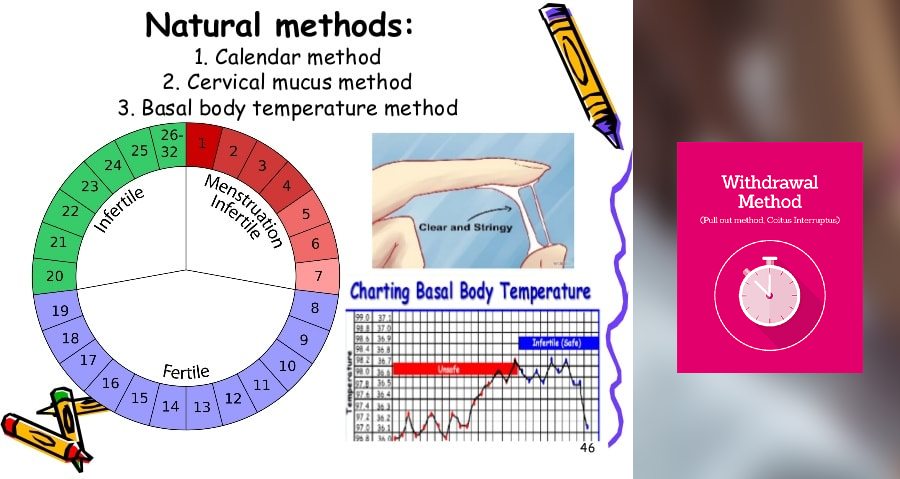What are natural contraceptive devices? Explain any one of them.
1 Answer
Those devices of pregnancy prevention that don't use any kind of medication or artificial physical devices are natural contraceptive devices. These concepts are based on awareness and observations about woman's and man's bodies and woman's mensurational cycles. These devices and methods are not 100% accurate. Actually, they are less reliable than artificial contraceptive devices and methods.
Five natural contraceptive methods are:
- Rhythm Method: In this method, people involve in sexual intercourse during a safe period. Safe period means before 9th and after 19th day of the mensurational cycle. If there is sexual intercourse during the ovulation period, there is a chance of conception. Therefore, people should avoid sexual intercourse during the ovulation period which is also an unsafe period.
- Coitus interruption method: Coitus interruption method, also known as a withdrawal method. In this method, the penis is taken away/out from the vagina and away from the woman's external genitals before ejaculation to prevent pregnancy. This method is not as dependable as the rhythm method because it takes determination and careful concentration during sexual intercourse. It takes self-control to adopt this method. Even if this method is followed there are high chances that the sperm enters the vagina or if pre-ejaculate fluids contain sperms in it. In addition, it doesn't offer prevention against sexually transmitted diseases.
- Cervical mucus method: There are certain hormonal changes during the mensurational cycle that produces mucus in the cervix of the female reproductive organ. The viscous and sticky stuff comes out of the vagina as a vaginal discharge. This discharge differs in color, texture, and amount during the mensurational cycle.
To use the cervical mucus method to prevent pregnancy, women need to check out their mucus every day and write the results on a chart. The changes in their mucus help them figure out when they’re going to ovulate and are able to get pregnant. During their safe days, they can have unprotected vaginal sex. On their unsafe (fertile) days, they shouldn't have vaginal sex or use another method of birth control.
The cervical mucus method is also called the ovulation method or the Billings method. It’s best to start this method with the help of an expert, like a doctor, nurse, or family planning counselor, because it can be hard to learn on your own.
- Body temperature method: A woman's body temperature normally fluctuates during the mensurational cycle. The temperature is lower in the first part of their cycle, and then rises when they ovulate. For most women, 96-98 degrees Fahrenheit is their typical temperature before ovulation. After ovulation, it goes up to 97-99 degrees Faherinheit.
To use the temperature method, a woman must take her temperature the same way every single day, and write it on a fertility awareness chart. FAM charts are available from a nurse or doctor, a local Planned Parenthood health center, or a family planning clinic.
- Lactation: This method is also known as lactational amenorrhoea (LAM) or breastfeeding method. The word "lactation" refers to breastfeeding and “amenorrhea” refers to not having a period. When a woman excessively breastfeeds her body naturally stops ovulating. And hence pregnancy is not possible. To make sure that a woman doesn't ovulate it is necessary to breastfeed at least every 4 hours during the day and 6 hours at night.
A woman can start using LAM as soon as her baby is born. It may take a little while for her to get used to breastfeeding. Lots of people need help in the beginning, especially if it’s their first baby. Most hospitals have people who can help.
-
What are the major problems in the health sector? Explain them. 1
-
Compare the socio-economic aspect between the Himalayan region and the Terai region. 1
-
How to minimize effects on the ecosystem on mountain regions? 1
-
How does the biological aspect of mountain region depend on its physical aspect? 1
-
Describe the socio-economic aspects of the mountain region in brief. 1
-
Four major functions of environmental preservation and explanation. 1
-
Explain the prevention measures against the over-exploitation of natural resources. 1
-
Human activities play an important role in the conservation of the environment. Justify 1


